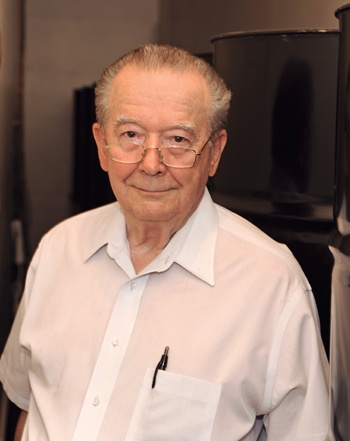Imagine living in a house surrounded by stacks of 55-gallon drums filled with water.
Tom Dunnam does, and he makes it all seem perfectly logical.
Dunnam, a member of Bluebonnet Electric Cooperative, says when he built his home in Caldwell in 1982, he read everything he could about passive solar technology because he was worried about the world running out of oil and gas. So, among other things, he added lots of insulation, thick walls and—most unconventionally—small ventilated rooms on the west and east sides to store water-filled drums. He has 70 of the sealed drums—filled with treated water that he says won’t rust—stacked on top of each other.
Why? Dunnam says it is a relatively inexpensive way to keep his 2,780-square-foot house cool. “There’s nothing exotic or magic about it,” Dunnam says. “It’s routine heat mechanics.”
Dunnam explains that he sets his central air conditioner to cool the house to 72 degrees by early morning. As the temperature rises to 78 degrees during the day, the 35,000 pounds of stored water in the drums absorb the heat, acting as a passive solar heat sink. (More specifics: The water absorbs 210,000 British thermal units of heat; one Btu is the amount of heat required to raise the temperature of a pound of water 1 degree.) There is a constant movement of air and interchange of heat throughout the house without any mechanical energy exerted, making this a passive system, he says.
Bill Christensen, owner of Sustainable Sources, a Hays County-based information source for green building techniques, says the concept is sound. “It was more common in the ’80s and not as common now. You get water leaks sometimes,” he says. (Years ago, Dunnam replaced some drums that he says were leaking because they were dented containers he salvaged from the oil patch.)
A retired builder and accountant, Dunnam provided a binder with copies of his energy bills and detailed notes, showing that he paid an average of $60 a month for electricity during 2009. And yet he says he keeps his indoor temperature a comfortable 72 to 78 degrees.
Despite the track record, Dunnam concedes that few homeowners would install walls of water. “People just won’t pay for it, and they won’t believe it,” he says.
——————–
Charles Boisseau is associate editor of Texas Co-op Power.


